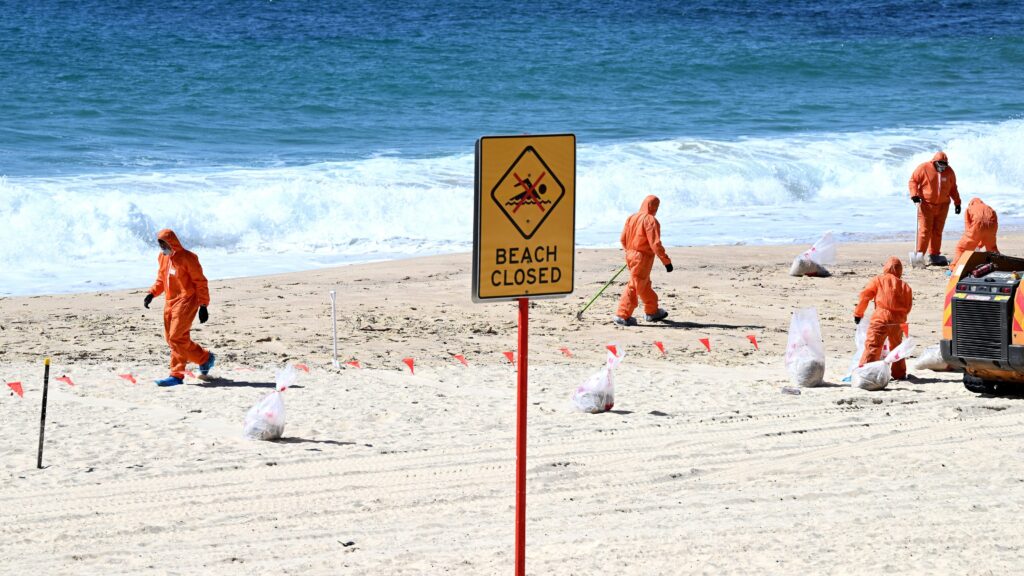Many people, including scientists and government agencies, were baffled when thousands of foul-smelling “black balls” washed up on Australian shores. Now, several weeks later, the contents of the obscured ball have been identified.
The black spheres found on a Sydney beach are composed of “fatty acids, petroleum hydrocarbons and other organic and inorganic substances,” the New South Wales Environmental Protection Agency (NSW EPA) said in a news release on Wednesday.
The NSW EPA said analytical testing carried out by the School of Climate Change, Environment, Energy and Water, the University of New South Wales (UNSW) Faculty of Science and the Mark Wainwright Analysis Center at UNSW confirmed the origin of the black spheres. It is said that
“It’s a really disgusting smell. It’s worse than anything I’ve ever smelled,” John Bebbs, an associate professor and researcher at UNSW, told 9News.
Scientists at UNSW called the black sphere a “mini fatberg,” CNN reported. According to Cambridge Dictionary, a fatberg is “a large mass of fat and waste that forms in sewers.”
Found on the beach: Creature washes up on Texas beach, authorities warn not to touch it
NSW professor: ‘I don’t want to swim with them’
Last month, the New South Wales Environmental Protection Agency banned Australian bathers from visiting seven beaches after lifeguards noticed black balls, according to the agency’s Oct. 17 news release. The facility was closed and a large-scale cleaning operation was carried out.
“You don’t want to swim with them,” UNSW University professor William Alexander Donald told 9News about the black balls.
The NSW EPA said the balls were observed in debris at Bondi, Bronte, Clovelly, Congwon, Frenchmans, Little Bay, Malabar and Tamarama beaches.
“We advise people not to swim in the identified areas or touch any balls that may have washed ashore until cleanup is complete,” the October release said.
What exactly is the black sphere made of?
The NWS EPA states that fatty acids are natural substances derived from fats and oils. These substances can be found in products such as cooking oils, soaps and skin care products, the agency said. Petroleum hydrocarbons, on the other hand, are chemicals from oil and gas products such as gasoline, motor oil, and diesel fuel, according to the NWS EPA.
NWS EPA says organic materials are made up of carbon-based materials that can “naturally decompose” and include hair, food waste, and other plants and animals. According to the government agency, the inorganic material in the balls primarily comes from sand, calcium salts and bacteria found in wastewater.
“Investigation revealed that the balls contained hundreds to thousands of different substances, including human hair and various fibers. This means they are mixed together. “This indicates that it is likely to have come from a source that releases waste.”
Where did the black balls come from?
The cause of the black balls remains unknown, according to the NWS EPA, but officials believe a shipping spill or wastewater spill may be the source. The problem facing authorities regarding the ball’s origin is its complex composition and the amount of time it spent underwater, according to the agency.
But the agency is not giving up, and the NWS EPA confirmed that final results are expected to be released in the coming weeks. It is unclear when the beach will reopen to the public or how long the cleanup will take.

Jonathan Limehouse covers breaking and trending news for USA TODAY. Please contact JLimehouse@gannett.com.



